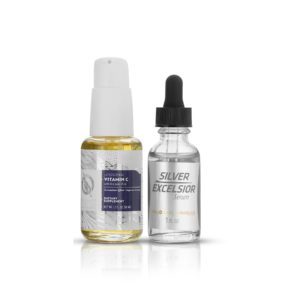Sharing is caring!
The immune system is a fascinating network of various organs, cells, and proteins that work together to defend against disease via a complex array of biological processes. The immune system is sophisticated and pervasive. This highly organized surveillance system is a result of eons of evolutionary changes, designed and perfected to protect the body and maintain health. All of this is innate within the fascinating system of immunity.
One critical aspect that the immune system has evolved for is its ability to discriminate between self and non-self. Additionally, it acquires and maintains a specific memory as a result of past encounters with specific antigens.
The essential tasks of the immune system are to:
- Detect, neutralize, and eliminate disease-causing pathogens, such as bacteria, viruses, fungi, and parasites.
- Recognize and neutralize harmful environmental substances.
- Detect disease-causing processes and assist the body in the elimination of waste and the reparation of tissue.
The Innate Immune System In Action
The immune system is always scanning and testing for potential threats, called antigens. Antigens are substances such as bacteria, parasites, viruses, insect venom, and pollen that are capable of provoking an immunological response. Antibodies are antigen-specific proteins that specialized white blood cells (i.e., B cells) produce to destroy or inactivate an antigen.
Antibodies attach to an antigen at a special site, part of the antigen molecule, called an epitope. The antigen-antibody interaction is a complex chemical process and an important aspect of the body’s defense against infection.
When the immune system encounters a disease-causing pathogen for the first time, it stores information about the invader and how to neutralize it. It can then quickly and efficiently fall back on that memory to fight subsequent exposure.
Autoimmune Response: Action Against Self
Our cells have surface proteins which are usually recognized as self, or native to the body, and which do not pose as threats. Sometimes the immune system mistakenly detects the body’s own cells as non-self and launches an attack on healthy cells. This is an atypical autoimmune response that may lead to pathology and various disorders. Multiple sclerosis (MS), rheumatoid arthritis (RA), systemic lupus, type 1 diabetes, and autoimmune thyroid disease make the list of some common chronic autoimmune diseases.
A variety of mechanisms can activate or exacerbate autoimmune response. One explanation is molecular mimicry between pathogenic and human antigens. Molecular mimicry occurs when a foreign antigen shares a sequence of structural similarity to a self-antigen. This can trigger defensive immunological response into an autoimmune response. Another possible mechanism for triggering autoimmunity is the expression of dual T-cell receptors (dual TCRs). In this case, T cells react to both foreign and self-antigens creating susceptibility to autoimmune disorders.
In recent years, advances in research have identified epigenetic factors as key triggers to the development of autoimmune diseases. A compelling amount of scientific research points to vaccines as a possible trigger of autoimmune disorders, specifically through the use of vaccine adjuvants. Numerous studies caution about the potential of vaccine adjuvants to induce autoimmunity in genetically predisposed individuals. It seems that when certain people are vaccinated, their immune system goes into overdrive.
What Are The Different Branches Of The Immune System About?
Non-specific (i.e., Innate) Immunity
The innate immune system is the body’s first and second line of defense. This rapid response system is inherited and active from the moment newborns draw their first breaths. Innate immunity is non-specific, which means it does not discriminate between invading agents.
The first line of defense against potential pathogens includes the skin, the mucous membrane in the alimentary tract, respiratory and genitourinary tracts, antimicrobial secretions, ciliated cells in the respiratory tract, and normal microbiota/flora already present in the body.
In addition to serving as anatomic barriers, the skin and mucous membranes produce specific biochemical agents at mucosal sites, such as acids, bases, and macromolecular proteins. Your innate immune system cells, neutrophils, and macrophages are one of the earliest emergency immune responses. Macrophages effectively kill pathogens via secretion of highly destructive substances. This leads to phagocytosis, a process where phagocytes engulf and ingest waste material.
The second line of defense comes into play when there is a breach in the cutaneous and mucosal barriers. Phagocytosis, the activation of inflammatory responses and complement protein production are essential mechanisms of proper immune functioning.
Innate immunity prevents the colonization, replication, and spread of infectious agents. These non-specific functions are critical for the survival of the species. Think of this as the emergency response squad always on guard and ready to respond to immediate threats.
Specific (i.e., Adaptive Or Acquired) Immunity
When the first two lines of defense fail to mitigate the infection, the third line of defense is marshaled to fight and prevent further invasion and damage. These are the sharpshooters. Unlike the non-specific immunity responses, the adaptive arm of the immune system is not inherent, and it takes time to develop (7-10 days), but specificity is key to immunologic memory.
There are two mechanisms of immunity within the adaptive immune system, B cell and T cell-mediated.
B Cell-Mediated (Humoral, Antibody-Mediated Adaptive Immunity)
Humoral immunity, also called antibody-mediated immunity, is responsible for the formation of antibodies against freely circulating extracellular antigens. T helper cells are a necessity for B cell response. Helper T cells are necessary for the differentiation of B cells (B-lymphocytes) into plasma B cells that can produce antibodies against a specific antigen.
Antibodies produced by the B cells will bind to antigens in order to neutralize them via lysis (destruction of cells by lysin) or phagocytosis. B cells originate and mature in the bone marrow. Vaccines’ mechanism of action is based on the theory of immunologic memory, whereby pathogenic material (i.e., antigen) is injected into the body in order to trigger immunologic response and antibody production. The vaccine paradigm relies heavily on the concept of antibody-mediated response as a way to confer lasting immunity.
T Cell-Mediated (Cell-Mediated Adaptive Immunity)
Cell-mediated immunity occurs inside infected cells and is mediated by T lymphocytes. This type of immunity is effective against intracellular antigens and altered self-cells (i.e., viruses, tumors, and transplants). Intracellular antigens originate within normal cells as a result of natural metabolic processes or as a result of endogenous viral or bacterial infection.
The innate immune system activates the cell-mediated immune response. Phagocytes, cells of the innate immune system such as macrophages or dendritic cells, are the first to detect invading pathogens. These cells engulf and destroy some, but not all antigens. Intact antigens present themselves on the surface of phagocytes to form antigen-presenting cells (APC). Cells of the adaptive immune system become activated via a specific protein, MHC-antigen complex, which engages the cell-mediated arm of the immune system.
T cells of the adaptive immune system mature in the thymus gland, where these lymphocytes differentiate into CD4+ and CD8+ T cells. This differentiation results in the production of cytotoxic T lymphocytes to fight infection. When a CD4+ cell becomes activated by meeting a matching antigen, it can differentiate into a memory T cell of various types, also known as helper T cells. Memory T cells remain in the body long after the initial encounter with specific antigens and mount faster, and stronger immune response, upon re-exposure.
Antibodies are not effective against viruses as the latter can hide within the cells of the host. It is not the humoral but the cell-mediated immunity that appears to be more effective in combating intracellular antigens.
Immunologists classify adaptive immunity as either naturally acquired or artificially-induced, depending on the mode of pathogen exposure.
[Editor’s Note: We’ve laid out how natural immunity works. In Part 2 of our story we’ll dive into vaccination and why it isn’t full proof.]

Zara is a Certified Homeopath with special interest in women’s health, organ therapuetics and natual approach to cancer. Zara holds B.Sc. in Geology and received formal training in Chemistry and Biology. In her free time, she is a singer and writer.
Submit your story or essay to Buzzworthy Blogs.
-
 Hydra+ Molecular Hydrogen Ultra Dose$64.44 – $189.47 — or subscribe and save 5%Rated 4.71 out of 5 based on 55 customer ratings
Hydra+ Molecular Hydrogen Ultra Dose$64.44 – $189.47 — or subscribe and save 5%Rated 4.71 out of 5 based on 55 customer ratings -
Sale Product on sale
 Liposomal Vitamin C + Silver Excelsior Immunity Bundle
Liposomal Vitamin C + Silver Excelsior Immunity Bundle$124.69$118.88 — or subscribe and save 5%Rated 5.00 out of 5 based on 1 customer rating -
 Colloidal Silver Healer$362.50Rated 4.90 out of 5 based on 21 customer ratings
Colloidal Silver Healer$362.50Rated 4.90 out of 5 based on 21 customer ratings
- Tags: immune cells, immunity, vaccines




